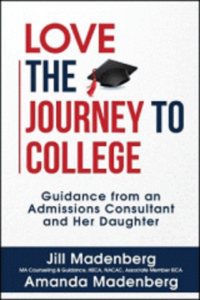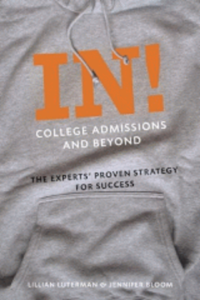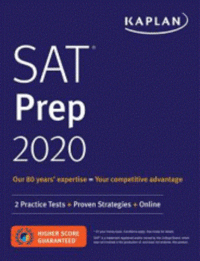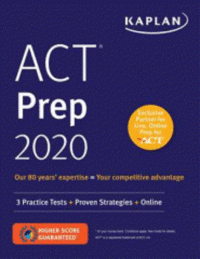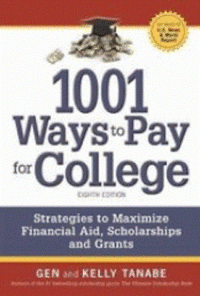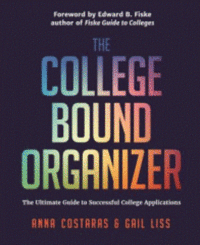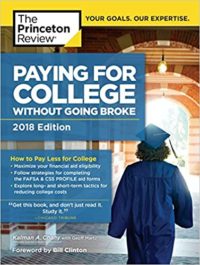
Do you know what high school seniors should be doing now to prepare for applying to college? August 1st marks the beginning of the college application season. Continue reading to learn how to hit the ground running once college applications open.
#1: Research Careers and College Majors
It is never too early to begin the college process. In fact, study habits and skills formed in elementary school are preparation for college. During high school, students should be exploring careers and college majors, researching colleges, and participating in activities that form their personality and character. In addition, high school students should have begun researching careers, majors, and colleges by their junior year of high school.
For more tips, see College Admissions Cracked: Saving Your Kid (and Yourself) from the Madness by Jill Margaret Shulman, available for checkout from CCPL’s collection.
#2: Develop a List of “Best Fit Colleges”
The best way to find a college is to choose a college that meets your needs academically, socially, and financially. Visit CCPL’s blog, Choosing a College That Helps You Meet Your Goals to learn more.
#3: Visit Colleges
High school students should visit colleges virtually or in person to get a feel for what each college is like. Plan to attend an admissions information session and to schedule a campus tour. You can get a good feel for what the students are like and whether or not you’d feel comfortable as a student there.
Pack a notebook and a camera to record your impressions. This will be useful when it’s time to make your college choice.
See BigFuture’s College Campus Visit Guide | Campus Tours and Checklists for tips on making the most of your campus visit.
For more tips, see Love the Journey to College by Jill Madenberg, available for checkout from CCPL’s collection
#4: Create a Student Resume/Activities List
Many college and scholarship applications require a student resume which details the student’s activities, work experience, leadership experience, honors and awards, and more.
Be sure to highlight your leadership and community service experience on your resume. These are often considered most important in distinguishing your character.
See CollegeBoard’s Your High School Resume for tips on writing your college resume.
For more resume-writing information see In! College Admissions and Beyond by Lillian Luterman, available for checkout from CCPL’s collection.
#5: Plan and Prepare for Testing
Not every college will require standardized test scores. Since the pandemic started in 2020, it has sometimes been difficult for students to take the tests. Many colleges have decided to make test scores optional, for the time being. See IvyWise’s Test Optional Admissions for more information. Students should check with individual colleges to ask about testing policies.
Free personalized test practice can improve test scores and is available at Khan Academy’s Official SAT Practice.
Tip: It normally takes 2 – 4 weeks after testing to receive test scores. Be aware of college application deadlines and be sure to test early enough to receive scores in time to meet your college application deadlines.
For additional practice, Kaplan’s SAT Prep 2020 and Kaplan’s ACT Prep 2020 are available for checkout from CCPL’s collection.
#6: Search for Scholarships
There are many scholarships available to students of all ages. And there are so many scholarships that you could spend all of your free time researching scholarships.
Find and apply for as many as you can. Federal Student Aid’s Finding and Applying for Scholarships is a great place to get started!
Check out 1001 Ways to Pay for College by Gen S. Tanabe for more scholarship opportunities, available for checkout from CCPL’s collection.
Tip: The most generous scholarships come from the institutions themselves. Begin there and then expand your search. Institutional and local scholarships have fewer applicants which makes for less competition and an increased likelihood of being awarded a scholarship.
#7: Personalize Your Applications
Letters of recommendation, essays, and interviews with admissions staff or alumni are all ways to personalize your applications. They can be used to tell the story of who you are and what you are passionate about.
Use brainstorming exercises to help you decide which of your traits to reveal through your essay (or interview) to leave your best impression. Here is one to help you get started, College Essay Advisor’s How to Brainstorm Topics for the College Admissions Essay.
For further reading, Anna Costara’s The College Bound Organizer is available for checkout from CCPL’s collection and details ways to help personalize college applications.
#8: Getting the Best Letters of Recommendation
Although it is tempting to ask your favorite teacher or the teacher in whose class you’re excelling to write you a letter of recommendation, the teacher in whose class you have struggled, worked hard, and overcome your challenges has a unique perspective on your character and can write specifically to the traits she has observed in you.
For more information on letters of recommendation, visit BigFuture’s How to Get a Great Letter of Recommendation.
#9: Understand NCAA Eligibility Requirements
Division I and II schools require student-athletes to be certified by the NCAA Eligibility Center to compete. There is no requirement to be certified to compete at Division III schools.
For details about NCAA Eligibility, see: NCAA’s Guide for the College-Bound Student-Athlete.
For step by step guidance on the athletic recruiting process, check out Laura Dickinson and Robert A. Dickinson’s Score College Scholarships, available for checkout from CCPL’s collection.
#10: Understand How to Apply for Financial Aid
Students should use FAFSA (Free Application for Federal Student Aid) to apply for financial aid (for the following academic year) beginning October 1. For high school students, that is in fall of their senior year.
Go to Federal Student Aid’s How Financial Aid Works to learn all you need to know about the federal financial aid process, including eligibility requirements and how financial aid works. Each student (as well as the parent who will sign the student’s FAFSA) will need an FSA ID to log into and sign FAFSA. There is no need to wait until October 1 to create your FSA ID. Go to Create Account to create your FSA ID. You will need your social security number and your own mobile phone number and/or email address.
For advice from a college funding expert on maximizing financial aid, see Kalman A. Chany’s Paying for College Without Going Broke which is available for check out from CCPL’s collection.
And be sure to check out our College Bound Series events this fall! You can find them on our Event Calendar!



